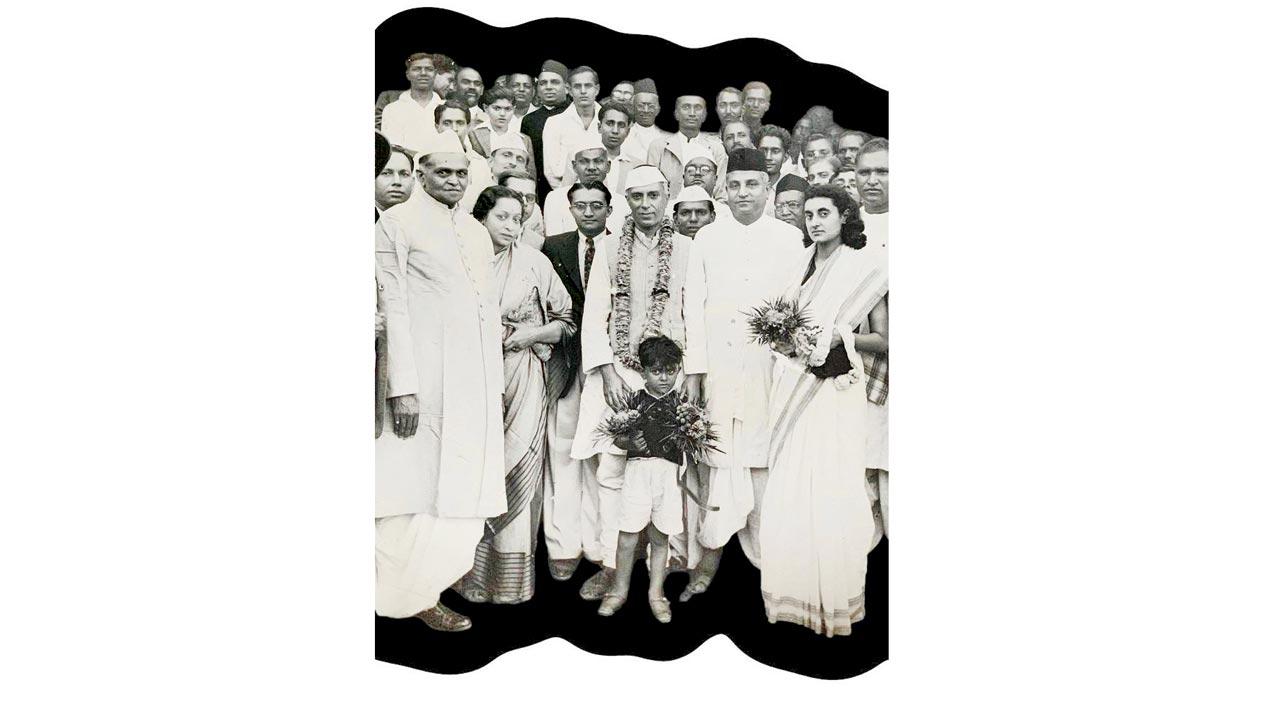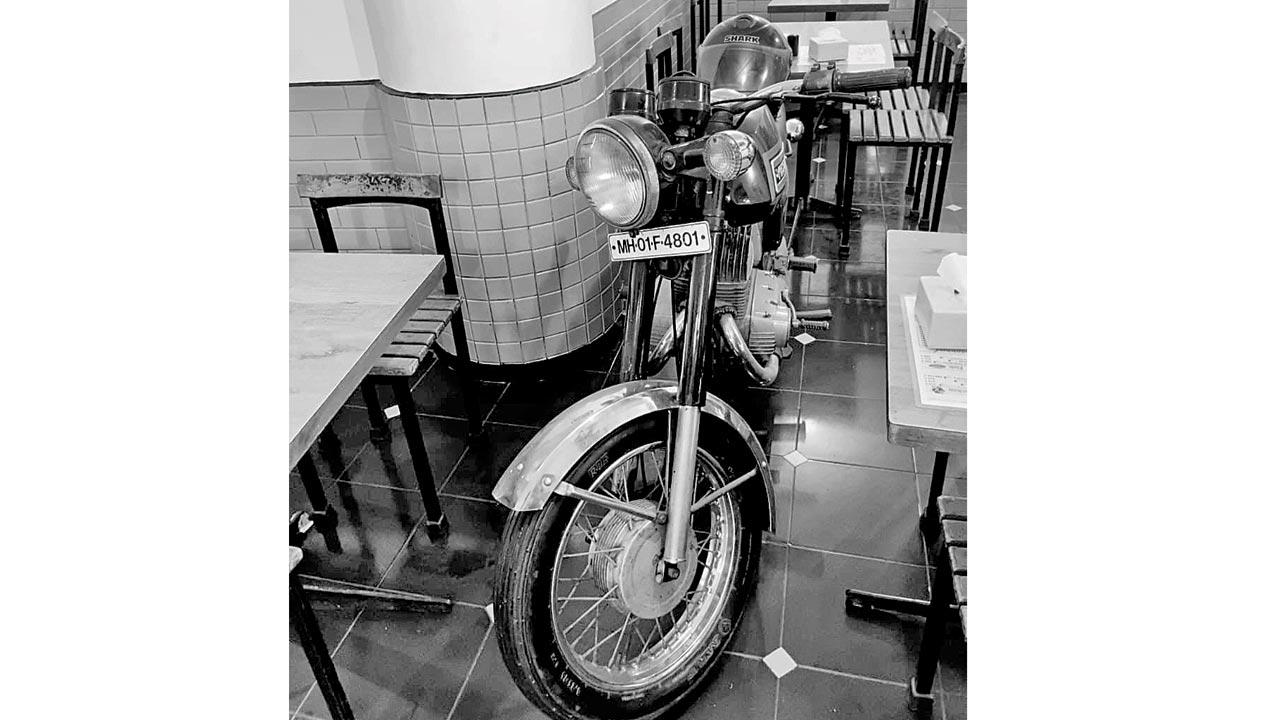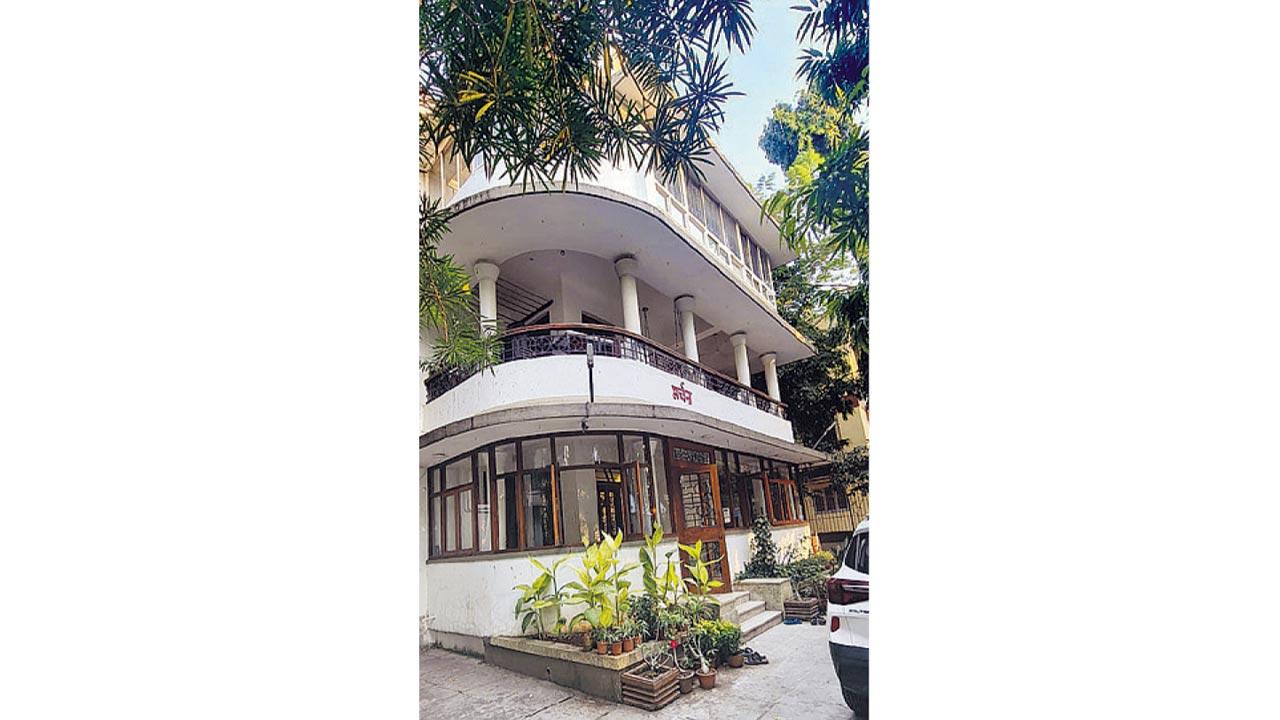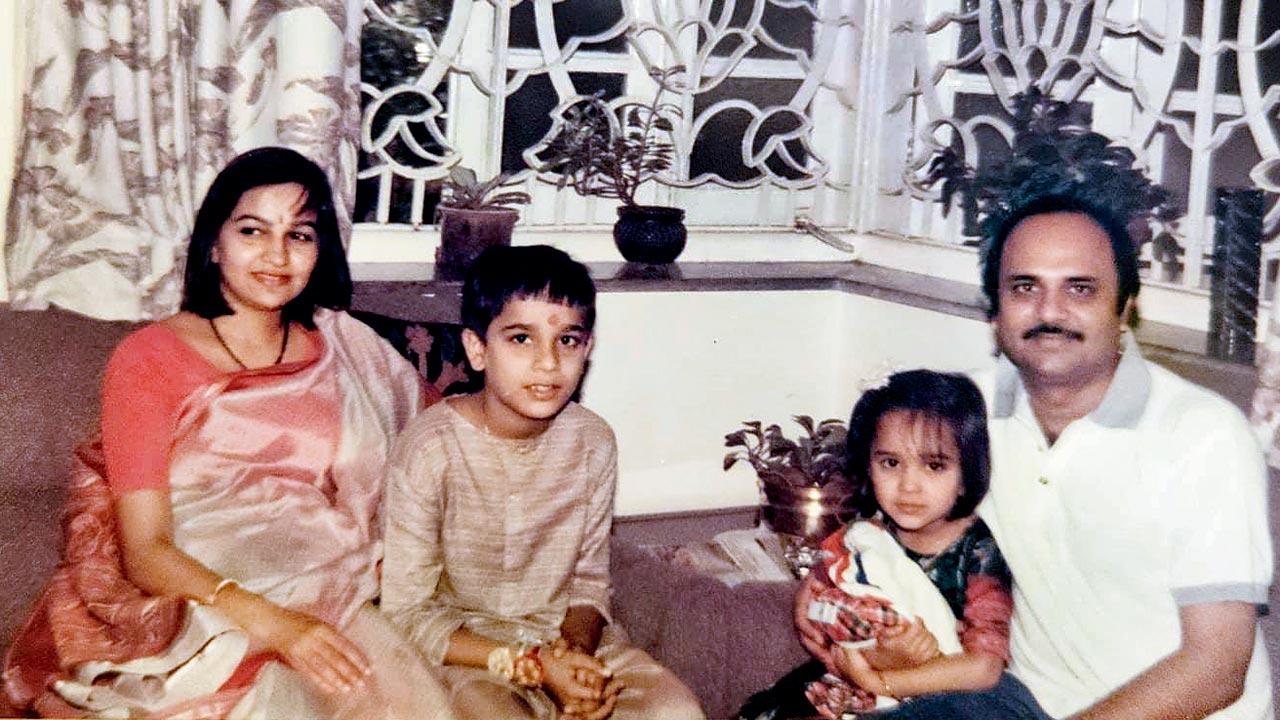April 28 marks 100 years of the Art Deco movement, launched at the 1925 Paris Exposition des Arts Decoratifs. We map a trio of Bombay buildings wearing this architectural style, with interesting back stories to match

Malboro House, originally Kamani House, on Peddar Road. Pic Courtesy/Art Deco Mumbai
 Imagine a building associated with Sathya Sai Baba, the Shah of Iran, the Nawab of Sachin and a host of cultural figures of heft.
Imagine a building associated with Sathya Sai Baba, the Shah of Iran, the Nawab of Sachin and a host of cultural figures of heft.
Sloping up eastward on a crest joining Peddar Road to ML Dahanukar Marg, Malboro House (formerly Kamani House), designed by Claude Batley in 1938, sensitively responds to local climate and topography. With capacious apartments crowned by vast ceilings, protected by deep circular balconies and topped by a wide RCC chajja, this landmark heaves with history. Engineers and contractors Messrs Gannon Dunkerley executed the vision of the firm of Gregson, Batley and King, for the mansion-like building intended for a German lady who left in World War II before she could move in.
Her loss was a Gujarati patriarch’s gain. Ramji Hansraj Kamani, from Dhari village in Amreli district of Saurashtra, Baroda State, purchased the property in 1945. That year also saw Ramjibhai establish Kamani Engineering Corporation. Possibly Asia’s first electric power transmission company, a pathbreaker in railway electrification, it flourished as the largest manufacturer of transmission towers in India—ranking second globally after SAE, Italy.
 Ramjibhai Kamani (leftmost) felicitating Jawaharlal Nehru, along with daughter Indira (rightmost) at the inauguration of Jaipur Metal Industries. The Kamanis also hosted the Shah of Iran at the Taj on a visit to Bombay. Pic courtesy/Kamani family
Ramjibhai Kamani (leftmost) felicitating Jawaharlal Nehru, along with daughter Indira (rightmost) at the inauguration of Jaipur Metal Industries. The Kamanis also hosted the Shah of Iran at the Taj on a visit to Bombay. Pic courtesy/Kamani family
From information in the family annals Parag Kamani shares, we understand his keenly entrepreneurial grandfather pioneered the production of derivatives of non-ferrous metals and alloys, lead oxide and zinc oxide. By the 1970s, the Kamani Group diversified across Bombay, Bhavnagar, Bangalore and Jaipur, market leaders for metals, rubber, chemicals and jewel bearings. Ballard Estate’s Nicol Road was rechristened R Kamani Road—Kamani Chambers, the company office, rose here.
A clean look envelopes Malboro House, the earlier name restored to it after the Kamani joint family separated from the ancestral seat. Rounded, south-facing balconies bear minimal ornamentation and westerly ones are shaped in simple rectangles. The neat plan finds the ground floor open to a terrace and first floor to the garden with a car park beneath.
The staircase and interiors of some of the seven flats over three storeys retain original tiles, a key Art Deco element. Fascinatingly, each apartment sports varying styles and every room is floored by different marble mosaic cement tiles. “We deep-cleaned these on coming in 1998. Since then, the tiles are washed with water alone, never floor cleaners. Yet, the only thing their smooth surface reflects is unlimited sunshine from the large windows,” marvels Pushpa Palat. We sit in her first-floor flat at the spot her bhajan teacher remembers Sathya Sai Baba presided. The head curl-haloed guru met disciples in four flats.
Curious about a missing “r” in the name Malboro (why not the erstwhile Marlboro spelling)? Pushpa’s husband, former banker Raghu Palat, explains that their neighbour below, poet-editor Pritish Nandy, balked at the thought of postmen associating the august address that attracted royals (the Nawab of Sachin occupied a flat above) with the Marlboro cigarette brand.
We hope the built-to-last elegance of Malboro House remains a feast for the eyes and soul.
Its current Grade III status accorded Grade II B instead might ensure this.
Hornby View, Fort
It is an icon within an icon. Few sights could be cooler than a 1985 Yezdi motorbike parked quirkily in the middle of an Irani cafe. This would be Ideal Corner in the small jewel of a building, Hornby View, once offering a lookout to the sweep of Hornby Road (DN Road). With standout cantilever balconies, it rests on a corner of Rustom Sidhwa Road, acknowledging the gent who was a member of the Constituent Assembly and member of the first Lok Sabha post-Independence.

Hornby View at Fort, with Ideal Corner restaurant on the ground floor. Pic courtesy/Art Deco Mumbai
The earlier name, Gunbow Street, may derive from the Brit corruption of Gunba, a predecessor of philanthropist-merchant Jagannath Shankarset. “Old records show Ganbasett or Genba Shet settled in Bombay during the first quarter of the eighteenth century and founded a mercantile business within the Fort walls.” (Bombay City Gazetteer, Volume 1.)
I stroll past old stores still sporting signboards like Gunbow Garment Cleaners, to interview Parvez Patel, a co-partner of Ideal Corner. The gleaming two-wheeler between tables is his. A sharp reminder that this was the space of Ideal Jawa, agents for Yezdi. Born in Prague as Jawa, to power ahead the world over, the European import was assembled in Bombay thanks to Rustom and Farrokh Irani, who started Ideal Jawa Motors right here in 1960. Rustom convinced the motorcycle-loving Maharaja (by then Governor) Jayachamarajendra Wadiyar of the need to manufacture the vehicle locally. Their Mysore factory was set up in 1961. “Sales thrived till the Japanese invasion from 1985, when the factory shut down,” says Patel, about stiff competition from the likes of Honda, Yamaha and Suzuki.
 The 1985 Yezdi motorcycle inside the cafe. Pic courtesy/Parvez Patel
The 1985 Yezdi motorcycle inside the cafe. Pic courtesy/Parvez Patel
Before the restaurant replaced Ideal Jawa, a snack counter run by Gulcher, Rustom’s sister-in-law, hawked homemade cutlets and patties. “She then introduced one main dish a day—an even bigger hit,” adds Patel. “I was tired of my shift system job with Oberoi Hotel. Living just next door in Reporter House, I began helping at Ideal and watched it change. Pre-Internet, this was the discussion adda for stock market traders. You couldn’t get a toe in. Bombay House staff came with lunch coupons. We had Central Bank and Citibank employees, besides at least 50 people from the HTA ad agency daily to eat. But the metro digging and pandemic have finished us off. We wait for mainly walk-in customers today.”
An elderly resident tells me, “I’ve been at Hornby View for 51 years since my marriage, and my father-in-law’s parents much before. It’s that old.” If a 999-year lease dated December 1939 seems indicative, her mother-in-law’s narrative suggests the family arrived even earlier. “She came here as a young bride. They moved to a Thana house when the war broke, because British armed force services stored supplies in flats like ours. She was full of praise for the fact that the soldiers maintained everything intact, so they returned to the same lovely home they had to leave.”
Archana, Lajpat Rai Road, Vile Parle
“Archana”, arrestingly written in Devanagari script on the streamlined facade of this bungalow, presents a veritable role model. An object lesson in a vintage architectural vocabulary gently coaxed to survive and suit contemporary comforts, this is unique: the sole such structure surviving on Vile Parle’s Lajpatrai Road, once lined with Art Deco gems from the 1940s-50s. Archana fronted the Juhu aerodrome until another residential row sprang up.
 Archana, the sensitively restored Deco bungalow in Vile Parle. Pics Courtesy/Shah family
Archana, the sensitively restored Deco bungalow in Vile Parle. Pics Courtesy/Shah family
Contoured with classic highlights of Art Deco, Archana displays geometric patterns, metal grilles and eyebrows—a climate-responsive element, an eyebrow in Deco parlance is a horizontal ledge extending outward above a window to serve as a sun shade. The many doors, pillars and balconies (fitted with swings) stay retained.
The Shah family lives on the ground and first storey of this home; Dhanwantrai (Dhanubhai) Desai, who built and owned Archana, then lived on the first floor. Pushkar Shah’s grandfather Manilal was a professor before he began their BEC Chemicals business. “As Dhanubhai was influentially connected, leaders like Indira Gandhi and other stalwarts have visited the bungalow,” says Pushkar.
 Pushkar Shah with his parents and sister at home, 1992
Pushkar Shah with his parents and sister at home, 1992
Rather than mindlessly modernise, the Shahs opted to consult conservation architect Vikas Dilawari for the renovation, respecting the building’s core personality. Pushkar’s mother Varsha says, “Located in the funnel of Pawan Hans, we’re safe from redeveloped structures around us exceeding a specified height increase.”
Exuding such an air of care, surely Archana is an example of tender transition that might be replicated elsewhere in the city?
Author-publisher Meher Marfatia writes fortnightly on everything that makes her love Mumbai and adore Bombay. You can reach her at meher.marfatia@mid-day.com/www.meher marfatia.com
 Subscribe today by clicking the link and stay updated with the latest news!" Click here!
Subscribe today by clicking the link and stay updated with the latest news!" Click here!








